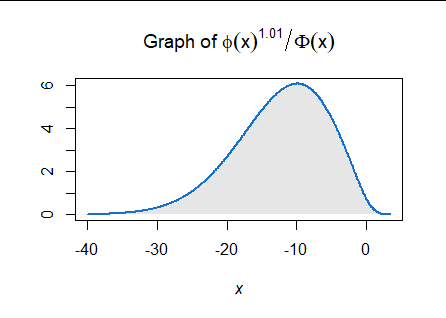Intuitively, the result is obvious because (a) $\phi$ is a rapidly decreasing function (its magnitude decreases at a quadratic exponential rate) and (b) $\Phi$ is bounded above and, for negative $x,$ is also rapidly decreasing at essentially the same rate as $\phi.$ Thus the fraction $\phi^2/\Phi$ decreases rapidly for both positive and negative $x,$ while remaining bounded in between, whence its integral is very nicely behaved and finite.
The problem, then, is to make this intuition rigorous. The rigor merely parallels the foregoing argument by making suitable quantitative comparisons.
When $x\gt 0,$ $\Phi(x)\ge 1/2$ (by a familiar symmetry argument). Whence (in this case) the integrand is bounded above in magnitude by
$$\bigg|\frac{\phi(x)^2}{\Phi(x)}\bigg| \le 2\phi(x)^2 \lt 2\exp(-x^2)/\sqrt{2\pi}$$
which (because it is proportional to the density of another Normal distribution) has a finite integral.
The harder part is the integral over negative $x.$ But here, the Mills Ratio is
$$R(-x) = \frac{\Phi(x)}{\phi(x)}$$
which, as the linked post explains, is bounded below by $-x/(x^2+1).$ Thus, for large negative $x$ (say, $x \le -1$),
$$\bigg|\frac{\phi(x)^2}{\Phi(x)}\bigg| = \bigg|\phi(x)\left(\frac{1}{R(-x)}\right)\bigg| \le \phi(x) \frac{x^2+1}{|x|} \le 2|x|\phi(x)$$
whose integral also converges (it can integrated exactly using elementary techniques).

Since $\phi(x)^2/\Phi(x)$ is bounded on the remaining interval $[-1,0],$ we have established that its integral over the entire real line is bounded in magnitude by the sum of three convergent quantities, whence it is finite, QED.
This argument continues to apply, essentially without change, to any integrand of the form $\phi(x)^k/\Phi(x)$ for $k\gt 1.$ It also shows (look more closely at the upper and lower bounds for Mills' Ratio) that the integral diverges when $k\le 1.$
(For a plot with $k=1$ -- which is just the inverse Mills' Ratio -- see the last figure of https://stats.stackexchange.com/a/166277/919.)



